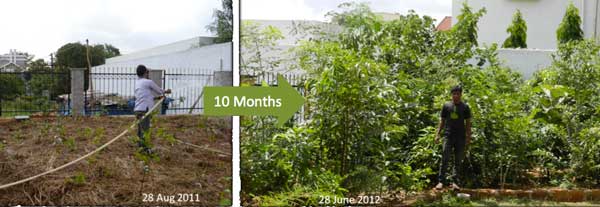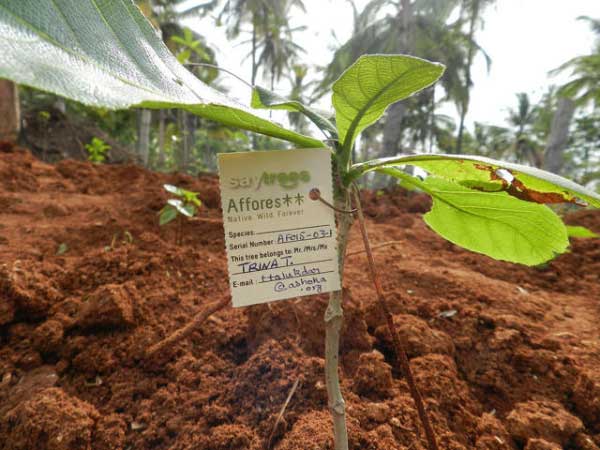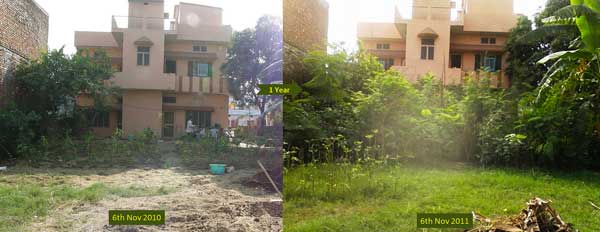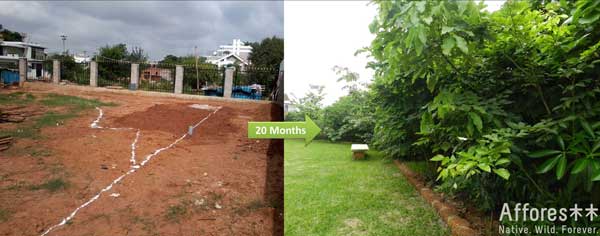What do you get when you combine the efficiency of a car assembly line with a tree hugger? It’s not a robo-hippie; it’s Afforrestt. Founded by Subhendu Sharma, Afforrestt is a company with one mission: “to exponentially increase forest cover by actively conducting and contributing to afforestation activities worldwide.” 1
What is afforestation?
Not to be confused with its cousin reforestation, afforestation is about creating a forest where there is no current forest. Meanwhile, reforestation works in an existing forest area to replenish plant life.

Starting from scratch, afforestation is about transformation, introducing a forest into a new space. Creating new forests brings a plethora of benefits to everyone. Plants absorb CO2 and give off fresh O2 for us humans to breathe, and, in many cases, plants provide fresh fruits and vegetables to sweeten the deal. That good old carbon cycle is always at work. Creating new vegetation also promotes biodiversity by providing new habitats and food sources for local animal species. 2 In addition, areas of vegetation integrated into urban areas can reduce the heat-island effect, the trapping of heat by urban structures. 3

So planting new forests sounds great, but don’t those take up a whole bunch of space? And now enters the beauty of Sharma’s methodology: factory efficiency melded with a passion for planting forests. Inspired by the afforestation methods of Akira Miyawaki, Sharma added his experience from working at Toyota to create a system that successfully grew 300 trees, representing 42 different species, in a 93 square-meter plot in his own backyard, the first project that started Sharma’s endeavor Afforest. That is a dense, thriving, fruit yielding forest encompassing the space of 9.5 average parking spaces! 4
“the best forest management technique is no management at all.”
Directions: Build A Forest
Called the Miyawaki method, the system operates on a simple paradigm: “the best forest management technique is no management at all.” 5 The first two years of a forest plant are spent investing the time and resources to establish a self-sustaining habitat that needs no human intervention. Soil samples are taken and analyzed for nutrient content. Local biomass is then used to fertilize the soil; Sharma’s rule is to use resources within 50 kilometers of a site, which involves creatively using byproducts like chicken manure or rice husks.

With the soil primed, it is time to randomly and densely plant the seedlings, which are selected based on a survey of the local species that naturally occur in the area. All that remains is to nurture the new forest with some watering and weeding before the maturing plants can be left alone. The dense vegetation is optimal for water retention and any dying plants, due to natural decay and competition, are rapidly recycled into the humus layer, that nutrient rich top layer of soil where decomposing matter becomes food for plants.
After about 20 to 30 years the new mini-forest will ideally possess the same attributes of a forest that had been growing undisturbed for 200 to 300 years! With its powerhouse combination of factory efficiency and thorough plant ecology research, Afforestt has planted 43,000 trees for 33 different organizations and companies in Europe, Asia, and Africa.

That’s great! But where do we fit into the picture?
Sharma has an ultimate goal of creating an online database that can give the step-by-step instructions for anyone around the globe to follow and succeed in creating their own mini-thriving forest. Imagine having a small, GPS -linked soil probe that can read the nutrient content in your own backyard and give you the exact information and steps to guide you on your way to creating your very own self-sustaining forest.
Here at High Trails, we challenge students to take home concrete steps they can make every day towards contributing to a healthy environment around them. Perhaps Afforrestt is the next step in empowering the next generation to do just that. With the knowledge and expertise available through technology, all there needs to be is a few willing individuals to undertake their own afforrestation projects, bringing the benefits of the forest into their local communities for everyone to share and enjoy.

At High Trails Outdoor Science School, we literally force our instructors to write about elementary outdoor education, teaching outside, learning outside, our dirty classroom (the forest…gosh), environmental science, outdoor science, and all other tree hugging student and kid loving things that keep us engaged, passionate, driven, loving our job, digging our life, and spreading the word to anyone whose attention we can hold for long enough to actually make it through reading this entire sentence. Whew…. www.dirtyclassroom.com
- Afforestt (2014) Afforestt Profile and Presentation. From www.afforestt.com ↩
- Mitsubishi Corporation (2014) “The Concept of Potential Natural Vegetation – A system for forest regeneration through the creation of ecology-based scientific scenarios” http://www.mitsubishicorp.com/jp/en/csr/contribution/earth/activities03/activities03-02.html ↩
- Eng, K. (9 May, 2014) “The man who plants trees: Shubhendu Sharma is reforesting the world, one patch at a time”. http://blog.ted.com/2014/05/09/shubhendusharma/ ↩
- Sharma, Subhendu (4 September, 2014). Subhendu Sharma: How to grow a tiny forest anywhere. http://www.ted.com/talks/shubhendu_sharma_how_to_grow_a_tiny_forest_anywhere?language=en> ↩
- Miyawaki, A. & Box, E.O. (2007). The Healing Power of Forests -The Philosophy behind Restoring Earth’s Balance with Native Trees. Tokyo: Kosei Publishing Co. ↩

Comments are closed.